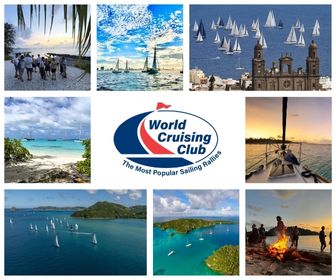Caribbean: Massive quantities of Pelagic Sargassum (brown seaweed)
During 2011, massive quantities of pelagic sargassum occurred throughout the Caribbean, impacting aquatic resources, fisheries, shorelines, waterways, and tourism. A similar event occurred in 2014 and continues in 2015, with reports coming in from cruisers in St. Vincent & the Grenadines experiencing a lot of weed along the windward shoreline. Whilst these large “mats” of floating brown seaweed are inconvenient for sailors using their engines (and unsightly when washed up ashore), Pelagic Sargassum provides important shelter and food for endangered species such as sea turtles and for commercially important species of fish.
Published 11 years ago, updated 6 years ago
The following information is taken from the Trinidad & Tobago Guardian.
There is also a good report on this emerging issue in the June issue of Caribbean Compass.
A lot of concern has been raised about the large deposits of pelagic sargassum along Caribbean shorelines. Among the affected are fishermen, who have had difficulty using their nets in the affected areas. A paper published by a pair of researchers in April addresses some common questions and concerns about sargassum. An edited extract of the paper is published below.
What is it?
Pelagic sargassum is a brown alga or seaweed, that floats free in the ocean and never attaches to the ocean floor. These free-floating forms are only found in the Atlantic Ocean. Sargassum provides refuge for migratory species and essential habitat for some 120 species of fish and more than 120 species of invertebrates. It’s an important nursery habitat that provides shelter and food for endangered species such as sea turtles and for commercially important species of fish.
There are two species of sargassum involved in the influx: Sargassum natans and Sargassum fluitans.
Where does it come from?
Sargassum travels on ocean currents. Scientists are able to determine where the sargassum comes from by back-tracking from its stranding location using ocean models and data on movements of satellite trackers that are deployed at sea. It is believed that the recent influxes are related to massive sargassum blooms occurring in particular areas of the Atlantic, not directly associated with the Sargasso Sea, where nutrients are available and temperatures are high. The sargassum consolidates into large mats and is transported by ocean currents towards and through the Caribbean.
Will the sargassum influx occur every year?
While it is not known whether the influx will happen every year, signs from the Eastern Caribbean are that we’ll be seeing sargassum in the region periodically throughout 2015. Some scientists associate the cause of sargassum with higher than normal temperatures and low winds, both of which influence ocean currents, and they draw links to global climate change.
The sargassum does not necessarily affect the same location in the Caribbean all year. As it’s transported on currents it progressively affects different locations across the region. At any one time of the year, there are multiple locations that can be affected.
Is it a problem to leave it to rot on the beach?
Sargassum occurs naturally on beaches, in smaller quantities. It plays a role in beach nourishment and is an important element of shoreline stability. For example, sand dune plants need nutrients from the sargassum, and sea birds depend on the sea life carried in the sargassum for food. During decomposition, there will inevitably be a smell and insects around. The experience in locations that have left the sargassum on the beach is that it will eventually get washed away or buried in the next storm, with rain easing the smell. Leaving sargassum on the beach has proven to be the simplest approach, also avoiding potential negative impacts associated with beach cleaning.
Are there any human health concerns associated with sargassum?
Although it can smell as it decomposes, this process is not toxic to humans. Sargassum does not sting. Depending on the type of sargassum you’re seeing, you might feel the pointy ends of the buoyancy pods of Sargassum natans. When it decomposes on sand you might notice a black layer underneath, but this is normal and a sign of nature doing its work of incorporating the sargassum into the beach.
What can we do about it?
In embracing the challenge of sargassum, good communications between agencies and the private sector, with the press, and with locals and visitors is essential to making sure that everyone knows where clean beaches can be found.
(Editor’s note: Following the Caribbean cruisers’ facebook pages, such as St Vincent & the Grenadines Cruisers, is a good way of keeping track where these large mats are occurring.)
In many countries, the law does not require agencies to remove seaweed since it’s not marine debris but is a natural part of the ecosystem. Where private sector capacity exists to clean beaches, coastal managers agree on balancing the importance of sargassum for natural processes and as life-giving nourishment for beaches and seabirds, with pressure to address negative impacts on communities. Establishing clear policies about where, when and how to clean beaches is the next step.
Reporting Site: Pelagic Sargassum in the Caribbean
http://www.usm.edu/gcrl/sargassum/
Caribbean Cruisers’ Facebook pages
http://www.noonsite.com/General/CruisingInformation/caribbean-cruisers-facebook-groups
Related to the following Cruising Resources: Caribbean Sea, Environment, Routing




